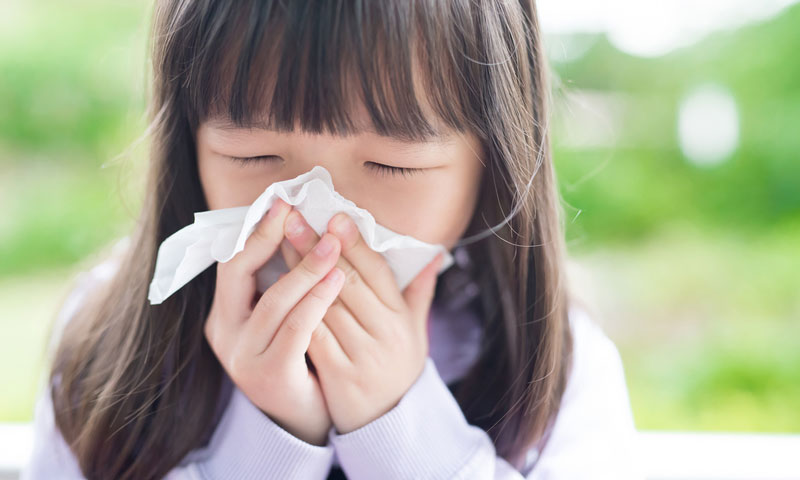Common Cold-Seasonal Cold-Rhinitis
Common Cold-Seasonal Cold-Rhinitis
Common cold – which as the name suggests, is a very common viral infection of the nose and throat (upper respiratory tract). It is generally harmless but may be irritating to the sufferer requiring quick relief. Many different types of viruses can cause a common cold.
While children less than six years of age are at greatest risk of colds with multiple episodes through the year, healthy adults can also expect to have two or three colds annually.
Although most people recover from a common cold in 7-10 days, those who smoke may have the symptoms that stay longer.1
In Ayurveda, the diseases with symptoms similar to those of Rhinitis or common cold resemble that of Pratishyaya. Instant onset and repeated episodes of these nasal symptoms also indicate the Vata dosha dominance in its progression and occurence.
Many causative factors like dust, fumes, cold breeze etc. manifest the symptoms of the disease by producing Abhighata (morbidity) in Nasa (nose) part of Pranavaha strotasa (Respiratory tissues) and subsequent vitiation of Vata, Rasa, Rakta Dhatu (tissues). Prolonged and continuous exposure to causative factors)/ also may lead to systemic manifestations (disease spreading throughout the body) due to vitiation in mansa (Muscles), meda (Lipids) etc. This leads to many conditions like bronchitis, bronchial asthma, nasal polyps etc.

Causes Of Common Cold-Seasonal Cold-Rhinitis
Although many types of viruses can cause a common cold, rhinoviruses are the most common culprit. These viruses can spread through droplets in the air when someone who is sick coughs, sneezes or talks.
If the cause is a virus, the condition often spreads by hand-to-hand contact with someone who has a cold or by sharing contaminated objects, such as utensils, towels, pens or other things. On touching the eyes, nose or mouth after such contact or exposure, there is increased chances to catch a cold.
Symptoms Of Common Cold-Seasonal Cold-Rhinitis
Symptoms of a common cold usually appear one to three days after exposure to a cold-causing virus. Signs and symptoms, which can vary from person to person, might include
- A running nose or blocked nose
- Soreness in throat
- Coughing
- Severe congestion in nose and throat
- Mild body aches or a mild headache
- Sneezing
- A low-grade fever
- Unwell sensation (malaise)
The discharge from the nose may become thicker and yellow or green in color as a common cold runs its course. Possible secondary infections need to be checked for at this stage.
Common Cold-Seasonal Cold-Rhinitis Ayurvedic Treatment
Ayurveda advocates Nidana-Parivarjana (Staying away from causative factors) – which is assumed as the foremost strategy to conquer over any disease. Management of Pratishyay calls for calming of the vitiated vata dosha. This is done by shodhana (Expulsive therapy by nasya (nasal drops) and basti therapy (medicated enema)], and following appropriate precautions [in ahar (food) and vihar (lifestyle regimen)] plus symptomatic treatment with herbal medications.
Diet Recommendations (Aahar)
- Ushnodaka(Warm water) for use, (Triphala churna) for nasya (nasal infusion) or mix with honey to be used in diet.
- Tea prepared with ginger, honey and lemon may help
- Factors that are identified to cause symptoms should be avoided.
- Milk products, fish or sea food, alcohol and virudha ahara (opposing foods) should be avoided.
- Yogic breathing exercises and saline irrigation through Neti karma may also be beneficial when practiced under proper guidance.
Lifestyle Changes (Vihar)
- Avoid diwaswap (daytime sleeping), and Atapa sevana(excessive outdoor work).

